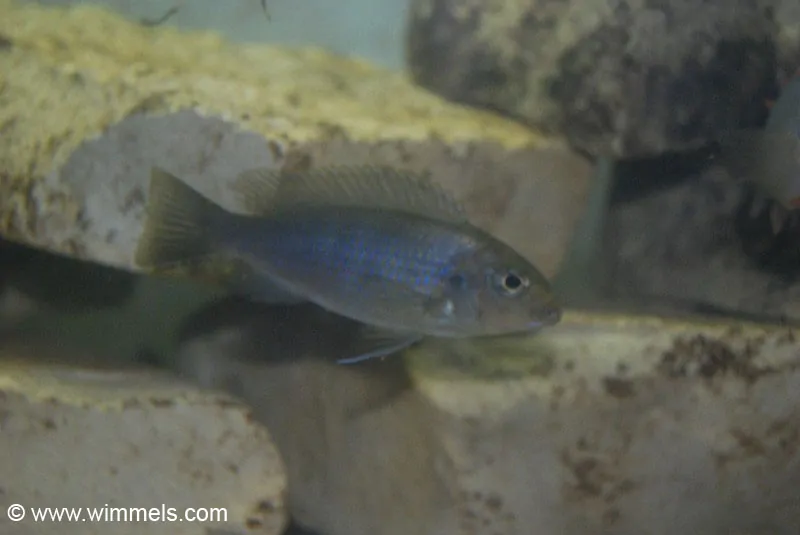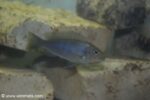Pseudotropheus perspicax
Both the Pseudotropheus Red Top Ndumbi and the Pseudotropheus Orange Cap are geographical variants of the Pseudotropheus perspicax. In 1995, Ad Konings placed a number of color variants in the perspicax group. The Perspicax Yellow Breast comes from Pombo Reef, just south of Ndumbi Reef. The Orange Cap also comes from there, although it is also found at Undu Point. The very beautiful Red Top Ndumbi, as the name suggests, occurs at Ndumbi Reef. The species is also closely related to Pseudotropheus socolofi.
Description
Despite its beautiful appearance; a light blue body with a bright red “cap” that runs from its lips to its dorsal fin, the Pseudotropheus perspicax Red Top Ndumbi has not exactly won the hearts of aquarists. This also applies to its relative the Pseudotropheus perspicax Orange Cap. They are therefore not offered much. This may also be because the females are not very fertile. Good females have small nests of 10 to 15 eggs but quickly fill their mouths.
The males are very territorial and occupy a small hole or spot between some rocks which they can defend very fiercely. This species can therefore best be combined with somewhat larger, strong varieties.
Diet
In the wild, the perspicax combs through the algae in search of small animals and of course the algae. Its diet should therefore consist of mainly vegetarian food such as spirulina flakes, alternated with the occasional bit of mysis, krill or artemia.
The Aquarium
Given the aggression towards conspecifics, only 1 male can be kept in the aquarium, preferably with 3 females. If only 1 female is kept, the pressure from the male is much too great, so she will not survive for long. In Lake Malawi, too, females usually retreat between the rocks. The aquarium must therefore offer sufficient hiding places to prevent casualties. This feisty little Mbuna certainly deserves its place in the aquarium despite its fierce character.
Video
Author
John de Lange
Copyright images
Wimmels
Kevin Bauman














Reviews
There are no reviews yet.